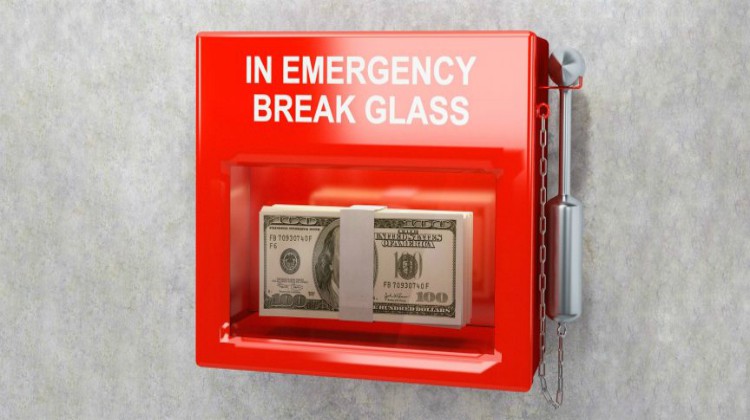Knowing how to start an emergency fund can save you from an unexpected financial disaster down the road.
Life doesn’t wait for anyone.
So it’s important to be prepared for the unexpected.
Many Americans live paycheck-to-paycheck. So the sound of having an emergency savings might sound like a cruel joke to some.
Start A Side Job Or Business
Starting a savings is easy when you have multiple sources of income. Especially one to set aside for savings. A side job or business generates extra cash each month. Something great for an emergency savings account.
Here’s the basic idea: the extra source of income is extra. You already have a reliable source of money to live with. The extra cash from a side gig or business is free to use anywhere in your budget. Use it to boost an emergency fund. This will make saving much easier for you.
If you’re like most Americans, you’ve found it hard to keep a typical savings going. Just when you think there’s enough, something happens that you weren’t expecting. Your plans go downhill.
You don’t just need an emergency fund for the unexpected. We also have shortcomings that impact our budget day in and day out. A wise move is to protect yourself. Do it with an extra source of money.
Look at part-time jobs or simple, small business ventures. You give yourself options for more cash and a better cushion to save with.
Revamp Your Budget
Plans in life and financial goals change. Your budget should change with it.
Integrating with an emergency fund is a new plan for you at this moment. It means your budget has to take into account a few things. Thinking of an accountant is good, but you don’t need one. You can also account for the money you’re making and the money you’re spending.
If you’ve already tracked these before, now is the time to improve your calculations. Do a double, triple and even quadruple check to find areas you haven’t considered. This is necessary for one thing. That’s to figure out how you can manage your money best. This is how you protect your savings.
You do it with an extra job or by lowering your living costs. Set aside a source of money for a solid emergency fund.
Begin Small But Finish Big
We often set goals we’re unable to follow through on. It’s when we set them to high or too far away. We tend to set goals at where we want to be. But not where we actually are.
For example, a person who wants a million dollars will set their goal for a million dollars. But not the process to a million dollars. This might sound counterintuitive to you. You see, a million dollar goal begins as a process. It starts with $100,000, $200,000. …etc.
The goals you set for your emergency fund needs to be relative. Base them on where you are right now. Not just where you want to be. The place you want to be occurs in steps. It builds from the right decisions you make today. And with what you already have.
You can do that by taking a good, long look at where you are. If you haven’t considered a budget, now is the time to. It’s the key to enabling your best analysis. Your best point of reference. A place where you start small to finish big.
Share Your Plan With Friends
Whatever you do, don’t walk this path without help. We aren’t suggesting you ask others for money. It’s in your best interest to get as much feedback as you can.
Ask for advice. You know the term, “Two heads are better than one.” The same applies for three, four or more people collaborating together. This offers perspective and a better understanding for your game plan.
You’ll thrive with the information, advice and suggestions you get. Your plan and support for an emergency fund will improve. You’ll have an easier time doing it with the help of others. So keep them in mind. Share your plans, and get the support of friends.
Don’t be shy, but be in control of the final outcome.
Don’t Touch Your Savings
Creating the right emergency fund requires you set aside money for its exact purpose. Having an emergency fund doesn’t mean you dabble here and there with extra cash.
It can’t be in your checking account or savings account. Be sure to set aside money as an emergency fund and for the specific purpose of emergencies.
The discipline you’ll need is in isolating it, so that it’s used for nothing else. Which is easier than many expect. The challenge is in actually setting aside money with a laid out purpose. Saving money for the sake of saving accomplishes little. Your savings remain on course with a plan only.
Your Definition Of An Emergency
Now that you’ve got these parts set up, lay out what an emergency means to you. If you don’t, then every whim that comes suggests itself as an emergency. Each event convinces you that a circumstance is dire enough for spending. But it’s you who evaluates the spending.
Protect your emergency by outlining what an emergency means for you and your goals.
Some examples might include:
- Car repairs
- House repairs
- Medical emergencies
- Loss of job
- Birth of a child
These are just an idea for what you might consider “emergency fund material”. YOU get to decide what an emergency is and what you’re saving an emergency fund for.
Do YOU have any tips or tricks for how to start an emergency fund?
We want to hear from you in the comment section!
Talk to you soon!


